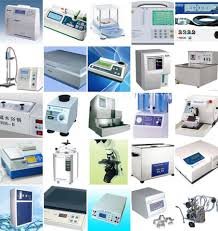What tools and machinery are typically used in pharmaceutical production and testing?

In pharmaceutical production and testing, a wide range of tools and machinery are used to ensure accurate manufacturing, quality control, and compliance with regulatory standards. These can be broadly categorized into production equipment and testing (analytical/laboratory) instruments. Here’s a detailed overview:
1. Pharmaceutical Production Equipment
A. Mixing and Blending Equipment
-
High Shear Mixer / Granulator: Used for mixing powders and forming granules, essential in tablet and capsule production.
-
V-Blender / Double Cone Blender: Blends dry powders and granules homogeneously.
B. Granulation Equipment
-
Fluid Bed Granulator: Used for drying and granulating materials in powder form.
-
Oscillating Granulator: Reduces particle size and shapes granules before compression.
C. Tablet Manufacturing Equipment
-
Tablet Press (Compression Machine): Compresses powder into tablets. Available in single punch and rotary types.
-
Tablet Coating Machine: Applies a coating to tablets for taste masking, protection, or controlled release.
D. Capsule Filling Equipment
-
Automatic/Manual Capsule Filling Machines: Used for filling empty capsules with powder or granules.
E. Drying Equipment
-
Tray Dryer: Removes moisture from pharmaceutical powders or granules.
-
Vacuum Dryer / Fluid Bed Dryer: More efficient drying methods, often used for heat-sensitive products.
F. Sterilization Equipment
-
Autoclave (Steam Sterilizer): Sterilizes instruments and products using high-pressure steam.
-
Dry Heat Sterilizer: Used for sterilizing glassware or non-aqueous liquids.
G. Liquid and Semi-Solid Manufacturing
-
Mixing Tanks with Agitators: For preparing liquid syrups, suspensions, and ointments.
-
Homogenizer: Ensures uniform consistency in emulsions and suspensions.
H. Packaging Equipment
-
Blister Packaging Machine: Packs tablets or capsules in pre-formed plastic packages.
-
Bottle Filling Line: Automatically fills and caps bottles with liquids or solids.
-
Labeling Machine: Applies labels to containers or packages.
2. Pharmaceutical Testing (Analytical and Laboratory) Instruments
A. Chemical Analysis Instruments
-
High-Performance Liquid Chromatography (HPLC): Used to separate, identify, and quantify components in a mixture.
-
Gas Chromatography (GC): Used for volatile compounds analysis.
-
UV-Visible Spectrophotometer: Measures absorbance of light by a sample; useful in assay and content uniformity.
-
Fourier-Transform Infrared Spectroscopy (FTIR): Identifies chemical bonds in a compound.
B. Physical Testing Equipment
-
Hardness Tester: Measures the breaking force of tablets.
-
Friability Tester: Checks how easily tablets crumble.
-
Disintegration Tester: Determines the time it takes for tablets to break down.
-
Dissolution Tester: Measures how quickly and completely the drug dissolves in liquid.
C. Microbiological Testing Tools
-
Laminar Air Flow Unit: Provides a sterile environment for microbial testing.
-
Incubators: Used for microbial culture growth.
-
Autoclaves: For sterilization of culture media and glassware.
-
Colony Counter: Counts bacterial colonies grown on agar plates.
D. Environmental Monitoring Tools
-
Particle Counters: Measures airborne particles in clean rooms.
-
Temperature and Humidity Loggers: Monitors storage and production environment conditions.
E. Titrators and pH Meters
-
pH Meter: Measures the acidity or alkalinity of solutions.
-
Karl Fischer Titrator: Used for moisture content determination.
Conclusion
Each of these tools and machines plays a critical role in ensuring the safety, efficacy, and quality of pharmaceutical products. Proper maintenance, calibration, and validation are also essential parts of pharmaceutical equipment management to meet GMP (Good Manufacturing Practice) standards.
🎓 Discover one of the best Quality Assurance courses available — click below to explore the course that’s shaping future QA skills.
https://trcjw.on-app.in/app/oc/306166/trcjw

